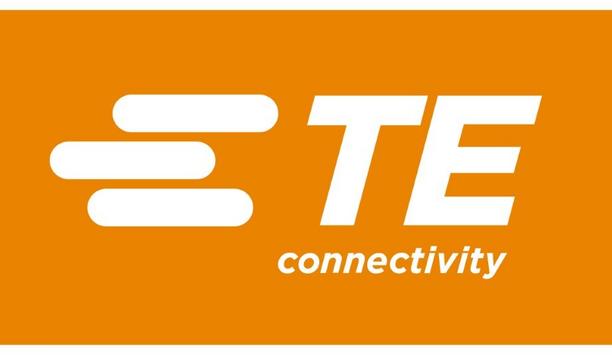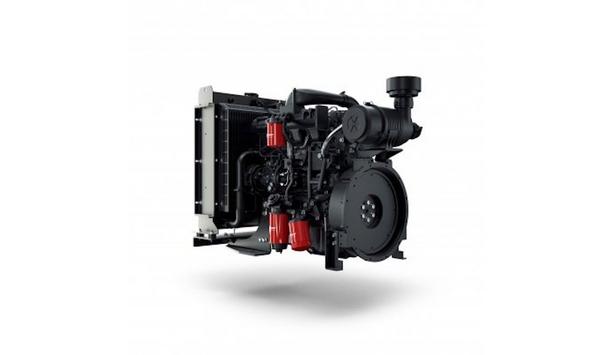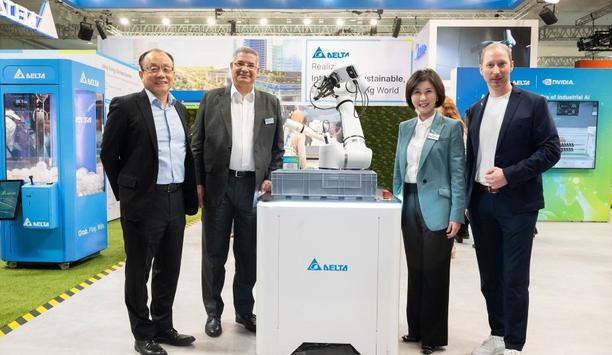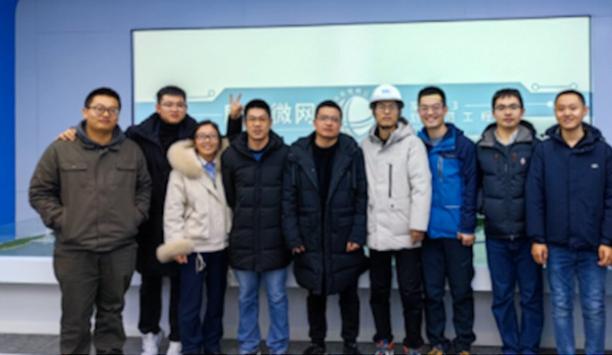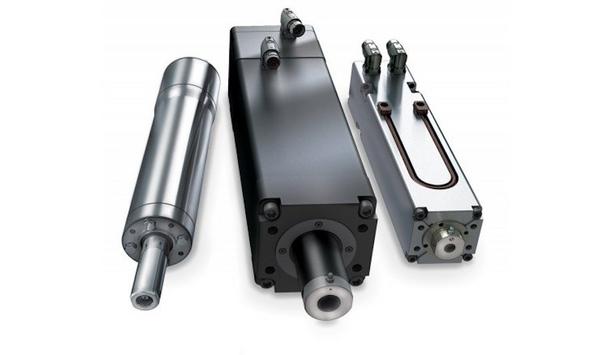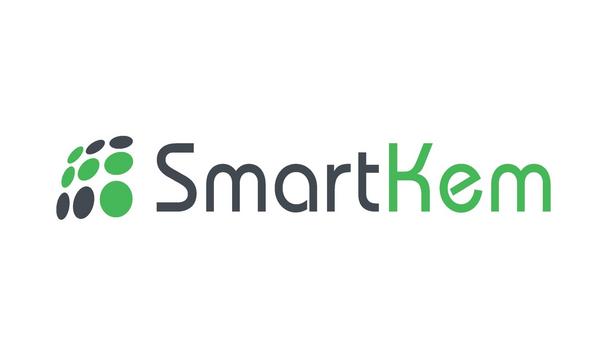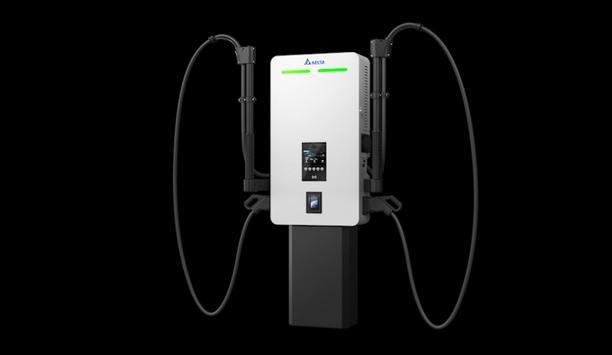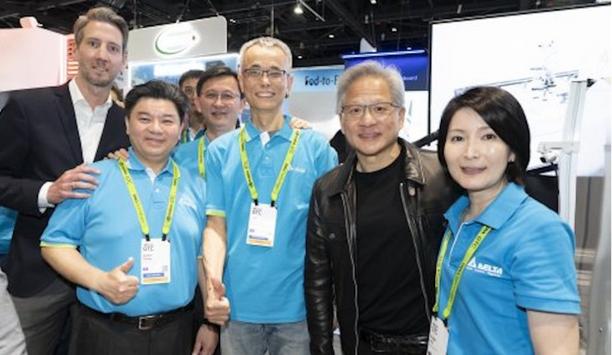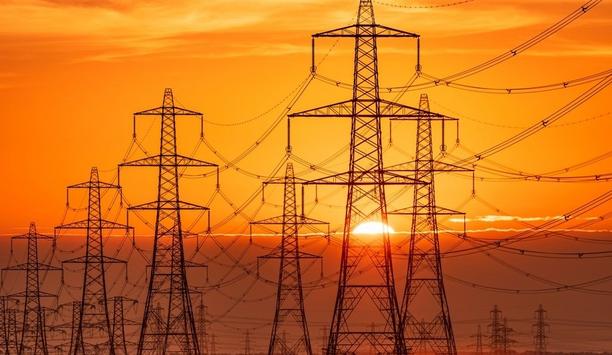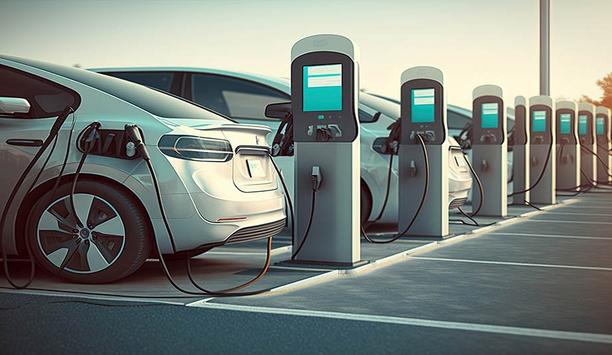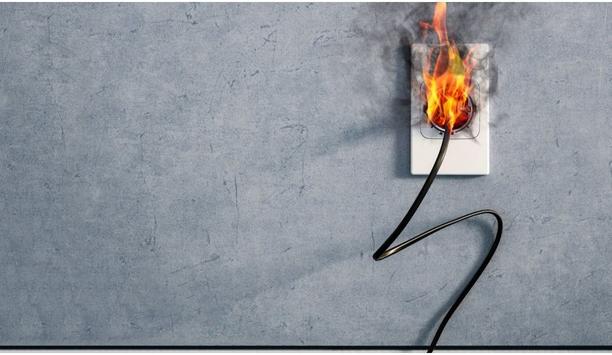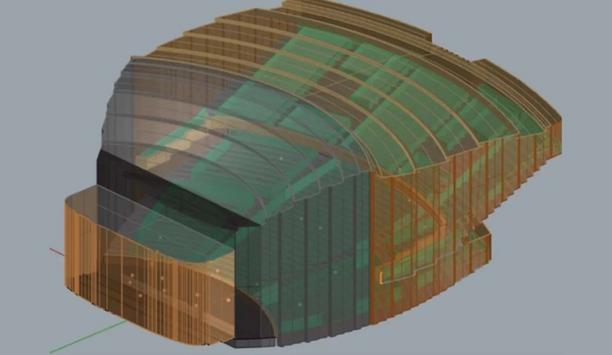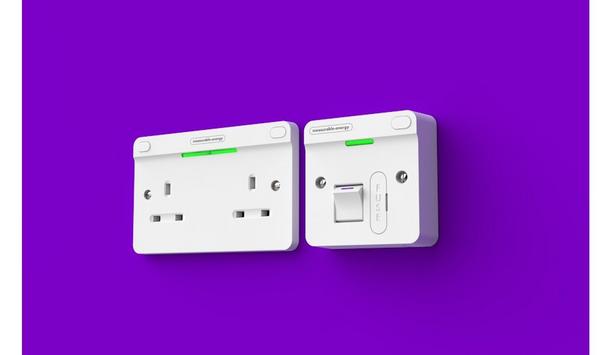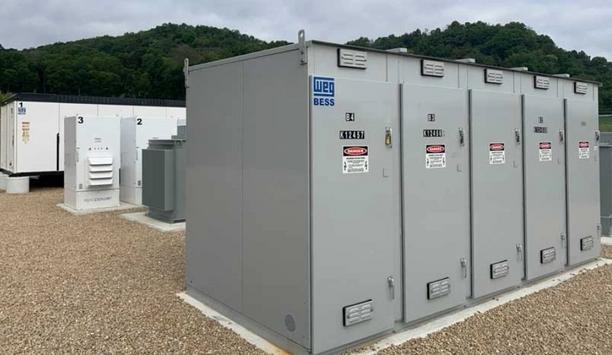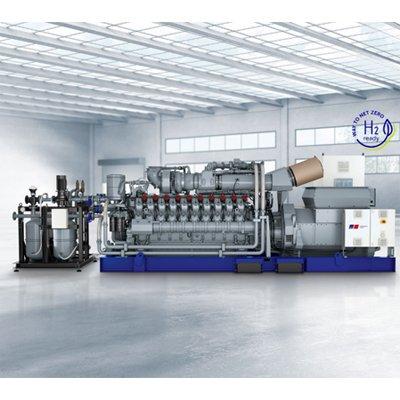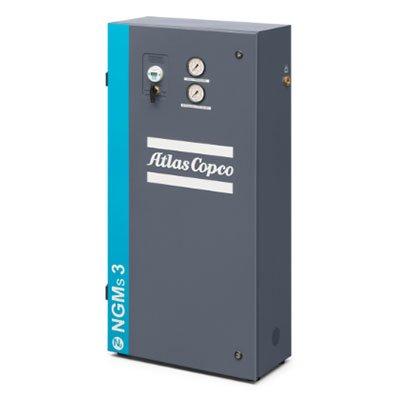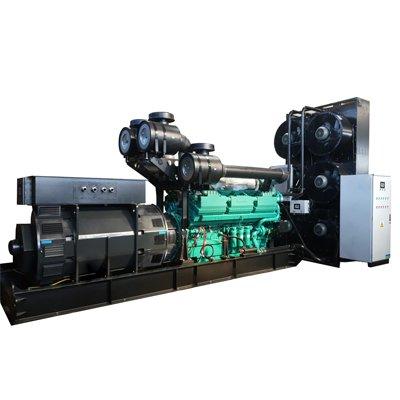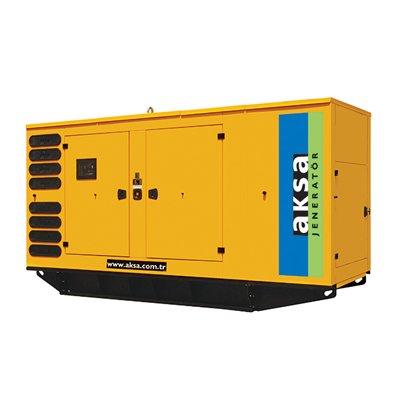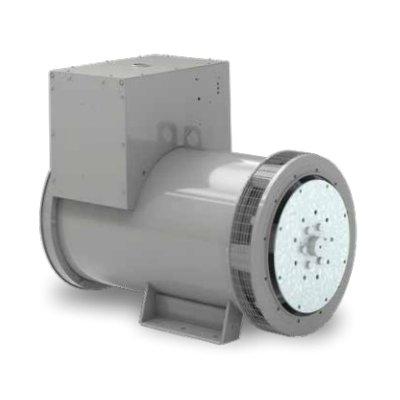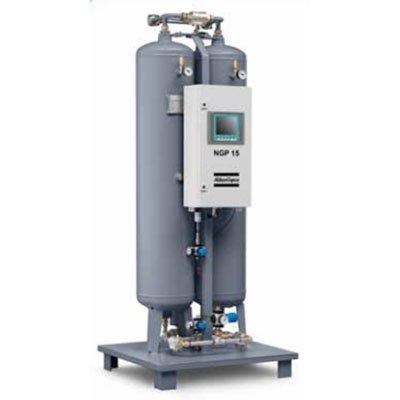Distributed Energy Resources (DERs)
News
Tolomatic Inc., an industry pioneer in innovative linear motion systems, will be showcasing its latest servo linear actuators at Automate 2025. Featuring an integrated servo motor, Tolomatic servo linear actuators are ideal for applications where dynamic movement, precise positioning and force repeatability are a priority. Tolomatic products Tolomatic products include the IMA and IMA-S linear servo actuators. These actuators feature integrated servo motors to save space and are available in both ball and roller screw configurations. Their space and weight efficiency benefit compact machine designs, and their durable construction makes them resistant to shocks and vibrations. Ongoing maintenance requirements As servo linear actuators, they reduce commissioning time and ongoing maintenance requirements. The IMA-S is a stainless steel IMA actuator with an IP69K-rated, hygienic design ideal for the most demanding food and beverage applications, including washdowns. Tolomatic will be featuring its servo linear actuator designs at Automate 2025, detailing how they work and exploring their applications, including food, beverage, plastic, and automotive manufacturing.
Smartkem, which is seeking to change the world of electronics with a new class of transistor technology, announced that now, Friday, March 21, 2025, Chairman and CEO Ian Jenks, CFO Babara Keck, and Head of Communications Selena Kirkwood will ring the opening bell at the Nasdaq MarketSite in Times Square, NYC. Commercialization of microLED Jenks stated, "We are extremely excited and honored to ring the opening bell to increase awareness of our progress to enable the adoption and mass commercialization of microLED displays. We continue to advance our goal of commercializing our proprietary semiconductor materials, which enable flexible, transparent, and lightweight microLED displays." The Nasdaq opening bell ceremony will be broadcast live at 9:15 a.m. Eastern Time from the Nasdaq MarketSite Tower in New York City, New York.
Delta, a pioneer in power management and a provider of IoT-based smart green solutions, announced the launch of its next-generation DC Wallbox 50kW EV charger. Designed to meet the demands of public and commercial charging applications, the upgraded model delivers advanced functionality and an optimized user-centric experience, ensuring seamless and efficient charging for both operators and electric vehicle (EV) drivers. EV charging infrastructure "The next-generation DC Wallbox 50kW exemplifies Delta's dedication to advancing the EV charging infrastructure with solutions that are both practical and innovative," said Arto Suni, Senior Director Electric Vehicle Charging Solutions, Delta Electronics EMEA. "By integrating payment systems, enhancing usability, and prioritizing safety, we are delivering a new benchmark in quick and convenient public and commercial EV charging." Advanced Functionality Integrated Meter and Payment Terminal: The next-generation DC Wallbox 50kW integrates a certified energy metering system and a credit card terminal for ad-hoc payment. This system enables secure, pre-authorized transactions, simplifying the payment process for EV drivers and ensuring accurate billing. With support for contactless cards, mobile payments, and RFID authentication, the charger ensures a quick and convenient payment experience. Enhanced Charging Status Light: A new charging status light on the front panel provides clear, real-time visual indicators of the charger's status. This intuitive feature enables EV drivers to easily identify available charge points, optimizing the overall user experience. Advanced Cable Management System: Delta's advanced cable management system offers a safe, durable, and user-friendly solution for cable handling. By minimizing clutter, protecting cables from wear and tear, and facilitating easy access, this system enhances safety and convenience, making the charger ideal for commercial EV fleets and public charging stations. Building on Success The next-generation DC Wallbox 50kW retains the key features that made its predecessor a market pioneer, including: High Efficiency: Achieves a 97% energy conversion rate, significantly reducing electricity loss and operational costs. Compact Design: With a slim 25cm profile, it saves up to 60% of installation space compared to conventional chargers, making it suitable for space-constrained locations. Dual Charging Output: Supports simultaneous DC charging through two output guns to accommodate a wide range of EV models and optimize usage turnover. Robust Connectivity: Built-in Ethernet and wireless communication enable efficient remote management and maintenance. The DC Wallbox 50kW underscores Delta's commitment to providing high-performance, space-efficient, and sustainable charging solutions that cater to the growing global demand for electric mobility.
Delta, a pioneer in power management and a provider of IoT-based smart green solutions, unveiled its broad spectrum of next-generation power and liquid cooling solutions at NVIDIA GTC 2025. These solutions are designed to bolster the performance and energy conservation in NVIDIA-enabled AI and HPC data centers, including the newly launched Power Capacitance Shelves and in-row 1.5MW liquid-to-liquid Coolant Distribution Units (CDU). NVIDIA Omniverse™ platform Delta’s AI-based Smart Solutions converge with NVIDIA Omniverse™ and NVIDIA Isaac Sim platforms The showcase also demonstrates how Delta’s AI-based Smart Manufacturing Solutions converge with NVIDIA Omniverse™ and NVIDIA Isaac Sim platforms to achieve seamless cyber-physical integration and enhance the productivity and flexibility of smart production processes in diverse manufacturing applications. Ping Cheng, Delta’s Chairman and CEO, said, “Delta strives to collaborate with our customers to provide smart and energy-efficient solutions capable of accelerating the development of the AI industry while fostering sustainability." Integrated with AI technologies Cheng added: "Our showcase at this year’s GTC demonstrates innovative power and cooling solutions for AI data centers, quite a few of which were designed with NVIDIA for their next-generation GPU architecture, as well as a smart manufacturing demo line integrated with AI technologies." "Moreover, our D-Bot cobot, power and cooling solutions for the NVIDIA MGX platform are also being featured. This comprehensive solutions portfolio for both cloud data centers and edge applications is a testament to Delta’s unique innovation prowess in the AI era.” Key highlights at the Delta booth #1023 at NVIDIA GTC 2025 AI-based Smart Manufacturing Demo Line Delta has leveraged its unique smart manufacturing expertise and system integration capabilities to develop five smart production scenarios of PC board assembly, which visitors will have the opportunity to interact with on-site. IIoT-based Line Manager enables remote control, autonomous exhibit line functions, and data analytics The AI-based Smart Manufacturing Demo Line features an ecosystem in which Delta’s D-Bot series Collaborative Robots (cobots), Omni® inserter, Integra® modular glue dispensing machine, DIATwin digital twin system, and IIoT-based Line Manager platform, collaborate along with NVIDIA Omniverse and Isaac Sim to enable cyber-physical production with virtual reality synchronization, virtual commissioning and product parameter input, smart production recipe generation and management, automated production line changeover, automated collision avoidance, and more. The IIoT-based Line Manager enables remote control, autonomous production line operations, and data analytics. By uploading product recipe parameters to Line Manager, manufacturers can quickly changeover between different product manufacturing processes while dynamically optimizing process parameters such as processing route and speed, achieving seamless automated mixed-model production. Power Solutions for AI and HPC Data Centers Delta is launching a new Power Capacitance Shelf at GTC. Designed to ensure a stable power supply for AI and cloud computing servers, this system boasts built-in lithium-ion capacitors (LIC), high power density and long hold-up time (5-second/15kW load) to perform fast charge/discharge so as to mitigate the GPU dynamic load reflections (AI server EDPP and idle mode transitions) to the AC electricity grid. In addition, the new 19-inch 1RU 66kW AC-DC Server Power Shelf offers industry-pioneering efficiency up to 97.5%. In traditional AI data centers, AI servers commonly occupy up to 3/4 of rack space, leaving limited room for power supply, backup power, and power capacitance systems. Delta’s New HVDC Server Power Solution Delta is also showcasing new parallel HVDC Modules for 800Vdc to 50/12Vdc power conversion Delta’s new HVDC server power solution, designed through collaboration with NVIDIA, helps IT managers solve that challenge by offering groundbreaking power supply capacities. The solution includes the newly-developed 72kW AC-DC Server Power Shelf to convert 400-480Vac from the transformer to 800Vdc with efficiency up to 98% while the new 90kW DC-DC Server Power Shelf converts 800Vdc to 50Vdc with efficiency as high as 98.5%. Lastly, Delta is also showcasing new parallel HVDC Modules for 800Vdc to 50/12Vdc power conversion and with power density up to 2,500W/inch3. Delta-Designed Rack for the NVIDIA MGX Platform The industry’s first ORV3 Inverter Power System for 2.5kVA/230Vac, and the new 2RU compact 22kW Battery Backup System to support 48Vdc systems with up to 60 seconds of backup time and surge load capability, are also featured. The Delta-designed rack for the NVIDIA MGX platform, offers a 1,400A busbar as well as 42RU manifold, is also exhibited along with key Delta solutions, such as management switches, server cooling solutions, 1RU inverter shelves, 1RU 55kW power shelves (3 phase), 72kW HVDC power shelves and 90kW DC-DC power shelves, 19’’ power capacitance systems, 2RU 22kW Battery Backup Power, and 4RU L2L CDUs. Liquid and Air Cooling Solutions for AI Data Centers and GPU Systems New rack fans capable of supporting other rack power architectures, including HVDC (400-800Vdc) The newly launched 1.5MW L2L (liquid-to-liquid) CDU, approved into the privileged NVIDIA RVL and AVL lists, is specifically designed to handle the thermal management challenges of multiple high-density racks, which can exceed 100kW capacity each. Delta’s liquid cooling solutions showcase also includes Cold Plate Loops, designed for the latest NVIDIA GPU/CPU to operate in conjunction with Delta’s 4RU L2L In-Rack CDUs for NVL72/36 as a complete rack scale cooling solution, as well as the powerful new 6RU in-rack CDU design with 200kW cooling capacity for next-generation chips. Also featured are cutting-edge air cooling options, including the new 3D Vapor Chamber boasting 1000W cooling capacity in a 4RU form factor, server fan achieving 20% performance increase versus prior models, and new rack fans capable of supporting different rack power architectures including HVDC (400-800Vdc). Passive Components for AI and HPC Data Centers Delta’s new High Density Power Chokes (dual/quad) support GPU operations under high current and high temperature (up to 150oC) conditions. For power and IT shelves operating in the high current (4000-8000A), high voltage (±400V), and high frequency (10-100MHz) conditions, the newly-launched Core-Shell Liquid Cooling Busbars offer power dissipation up to 400kW with ultra-low inductance and superior performance. Welcome to Delta’s booth #1023 at NVIDIA GTC 2025 to learn how Delta and NVIDIA collaborate to usher a new era of AI-based smart manufacturing and energy conservation in the AI realm.
Expert Commentary
Fleet electrification provides opportunities to achieve climate goals while delivering social, financial, and environmental benefits to individuals, businesses, and communities, but the road to successful EV implementation is not without obstacles. Your EV fleets need to work — all the time under varying conditions — to ensure optimal uptime while maintaining energy efficiency. Consequently, electric vehicle service equipment (EVSE) can’t just be “tacked onto” your existing operation. Rather than a “new standalone addition,” it requires a thoughtful and forward-looking approach to seamlessly integrate into your overall facility. Ensuring the type of reliable power needed for an electrified fleet is critical. Luckily, there are a number of new and emerging solutions that promise to deliver clean and reliable local power generation. The Challenges The availability and reliability of the power needed to support electrified fleets is a primary roadblock for many commercial fleet operators. It’s important to look at where that power comes from, how much it will cost, and whether it will be available when needed. Projections indicate that the demand for electricity will surge by 50% during the next two decades Today’s energy landscape is complex. Projections indicate that the demand for electricity will surge by 50% during the next two decades, with no signs of slowing down. According to Grid Strategies, the U.S. electric grid is not prepared for this level of significant load growth. The sheer amount of power needed to keep trucks charged and running 24/7 can be substantial. This poses a key risk for reliability in EV infrastructures, particularly in mission-critical situations. In addition, most fleet operators have become accustomed to fairly predictable fuel costs, since many take advantage of long-term supply arrangements. By contrast, electricity grid costs can vary and result in unpredictable spikes. This adds an extra layer of complexity when it comes to the planning and timing of fleet charging. As a result, many fleet charging operations are turning to local power generation. Intelligent Microgrids, the Energy Insurance Microgrids are nothing new, with rural communities relying on them for decades. Increased affordability and shifting regulations are allowing for more of these microgrids to be powered by renewable energy methods. A common misconception is that microgrids can completely off-set power from the grid. In reality, they are designed to provide peak load shaving and system resiliency. Coupled with an EV infrastructure, microgrids can offer more flexible and reliable energy management. When compared to a traditional microgrid for a building system, microgrids for fleet electrification present new challenges. Most notably, microgrids for fleet electrification are not modeled on an existing load, but rather anticipated demand, which can make reliable load-based modeling more difficult. However, an "intelligent" microgrid uses control systems to manage, store, charge, and discharge energy across the system. Strategic energy management The system can buy power from the grid during low-cost periods while storing self-generated solar power These controls monitor supply and demand, track real-time electricity prices, and create efficient charging schedules, considering factors like Time of Use (TOU) and peak day rates. For example, when electric fleets plug in, demand may increase significantly overnight, making strategic energy management crucial. The system can buy power from the grid during low-cost periods while storing self-generated solar power for later use. When prices rise, it discharges stored energy, keeping costs stable. It can also operate independently, ensuring continuous power during outages and disruptions, improving efficiency, cost control, and reliability. Conversely, fleets often permit charging flexibility within defined boundaries, providing a unique dispatchable resource that can be tuned to fit the needs and energy resources of the customer. A New Category of Local Power Generation Linear generator technology is proving to be an innovative solution for EV infrastructures by providing flexible, resilient and cost-effective on-site base load power. Linear generator technology provides fuel-flexibility meaning they can directly run and switch among traditional fuels like natural gas or propane. Or, they can use low and zero-carbon fuels such as RNG, biogas, hydrogen, and ammonia. Its backup capabilities ensure power through hurricanes, sub-zero snowstorms, excessive heat, and other extreme conditions. Based on capex and operating costs, linear generators can provide a competitive levelized cost of ownership compared to grid power or other alternatives in certain regions. Net-zero goals These solutions allow for flexibility and integration of new fuels as they become available The technology can also be quickly deployed at scale, which is ideal for large fleet operators looking to quickly and cost-effectively deploy resilient EV charging infrastructure while reducing emissions and working toward net-zero goals. What’s more, linear generators deliver a more “future-proof” path. While the dominant sources of fuel for local power generation today is well understood, new and exciting fuels are on the horizon. These solutions allow for flexibility and integration of new fuels as they become available. All without having to replace or retrofit existing equipment. Experts Will Power the Future As companies look to integrate EVs into their operations, a well-thought-out plan for infrastructure is essential to ensure safety, reliability, and long-term success. The integration of onsite power systems will play a critical role in optimizing energy use, lowering costs, and maintaining system resilience. The good news is that energy management is becoming more flexible, ensuring that fleet electrification is not only sustainable but also cost-effective. To ensure a seamless transition and maximize the benefits of fleet electrification, many companies will be moving forward by working with experienced consultants and planners to create a future-proof infrastructure that meets both operational and environmental goals.
While the technology sector was once considered the most desirable in terms of salary and job security, recent layoffs have exposed its vulnerability. Job security has always been a sought-after job benefit, and one career path that’s often overlooked is skilled trades. The skilled trades industry stands out as a resilient sector, offering the next generation of workers a promising path for growth and professional development through on-the-job experience and education. Significant talent gap With the retirement of Baby Boomers leading to a significant talent gap, current trade professionals are now more determined than ever to attract younger workers to the industry. Regrettably, many students in high school fail to see the value of pursuing a career in skilled trades. In a 2022 survey, only 16% of students noted they were likely to consider a career in the skilled trades. However, as other industries face a high level of uncertainty, the skilled trades offer stability and constant demand for services such as new construction, renovations, and climate change-resilient building improvements. The Benefit of Trade Education One of the major benefits of skilled trades education is its flexibility and room for career advancement The skilled trades industry presents young professionals with unique opportunities for hands-on learning and digital skill development. And as the next generation begins to explore higher education alternatives to gain valuable life skills, hands-on training in skilled trades becomes increasingly appealing. In trade education, learning happens directly from experiences in the field, complemented by classroom training, on-demand video sessions, and even virtual reality (VR) simulations. This approach ensures that graduates are well-prepared to start their careers immediately, avoiding the burden of college debt. One of the major benefits of skilled trades education is its flexibility and room for career advancement. Unlike traditional four-year college programs, trade school education typically lasts around two years, making it accessible to individuals at different stages of their careers. Moreover, the skilled trades industry provides workers with continuous opportunities for education and specialization. Formal certifications or licensing requirements define career paths in the skilled trades, and workers can pursue additional certifications to open new avenues for advancement. Beyond Traditional Training Techniques To maintain its resilience, the skilled trades industry is embracing technology To maintain its resilience, the skilled trades industry is embracing technology, integrating tech-focused learning methods and digital platforms to streamline processes and increase efficiency. Gen Z is inherently tech-savvy, and incorporating new technologies in training and in the field will attract these younger generations to the industry. This can include implementing tech-focused learning methods, embracing gamification, or transitioning from physical code books to digital platforms to streamline processes, make work more efficient, and increase engagement on new tools coming onto the jobsite. While the skilled trades industry offers numerous opportunities for growth and professional development, it is essential to acknowledge that these professions are not without their risks. Enhancing safety training Skilled trade workers, particularly those in fields like construction, electrical work, and fire safety, are often exposed to serious fire, electrical, and related hazards on the job. Ensuring the safety of these workers is of paramount importance. One powerful solution to enhance safety training is the integration of digital learning technology One powerful solution to enhance safety training is the integration of digital learning technology, which is uniquely suited to provide deep immersion simulations. By incorporating virtual reality (VR) and augmented reality (AR) training modules, skilled workers can experience lifelike scenarios that simulate potential hazards in a controlled environment. This kind of training allows them to develop critical skills, practice emergency response procedures, and make informed decisions without facing real-life risks. By leveraging digital learning technology, the skilled trades industry can better equip its workers with the knowledge and experience needed to enhance job safety and minimize workplace accidents. The Bottom Line The skilled trades industry presents a promising future for the next generation of talent. It offers resilience in the face of economic fluctuations and provides abundant opportunities for growth and professional development through hands-on training. To attract a new generation to this industry, organizations must be willing to not only emphasize value, in terms of resiliency salary, to candidates, but also show that the industry is moving towards innovation just like any other profession. As the industry continues to embrace technology, such as digital learning, it will remain relevant and appealing to young, technologically adept individuals seeking rewarding and stable careers. And by showcasing the value and potential of skilled trades, we as skilled trades professionals can inspire more individuals to consider this path and take the first step toward a successful and fulfilling career.
The promise of electric vehicles is closer to reality than ever before. New plans and investments at the federal level designate billions of dollars to move our country toward clean energy, including $2 million to help auto manufacturers retool facilities to increase EV production. Additionally, the Biden Administration has announced a goal to create 100% carbon-free electricity by 2035 and a net-zero carbon economy by 2050. Domestic EV marketplace The domestic EV marketplace has grown from 16,000 to more than 2 million vehicles in the last decade and is poised to expand at lightning speed over the next ten years. S&P Global mobility has predicted that by 2030, electric vehicles (EVs) will make up 40% of the U.S. market share of new vehicles on the road. This dramatic increase in EVs will require a nationwide network of charging stations to meet the demand from the current 140,000 to over 1.1 million. Charging stations It is a necessity that regulators lay the groundwork now for a reliable and secure charging networkThe expansion of charging stations will undoubtedly give zero-emissions drivers more confidence in their ability to refuel more conveniently. Still, it’s critical that confidence in infrastructure security also be prioritized alongside this growth. If not adequately protected and monitored, charging stations could serve as access points for cybercriminals, potentially leading to personal data leaks, attacks on vehicle systems, and even widespread blackouts. As EVs continue to gain momentum as realistic alternatives to CO-2 emitting vehicles, it is a necessity that developers and regulators lay the groundwork now for a reliable and secure charging network for the long term. EV Charging Infrastructure and the electric grid The nation’s electric grid generates and delivers electricity essential to everyday life. It’s made up of power plants and other sources of generated electricity, complete with transmission and distribution lines and infrastructure that delivers essential power. Grid connection An important aspect to remember about EV charging stations is that they connect to their relative electric grid. Simply put, the infrastructure for charging stations is comprised of devices that wait for another device to connect and communicate. However, it lacks a third-party firewall or other devices that can act as protection. Unfortunately, this results in vulnerability and means new doors for cybercriminals to walk through. Cybersecurity risks If the grid became compromised by a large-scale attack, it could lead to destructive and widespread blackouts Even before EV charging stations are factored in, the electric grid faces substantial cybersecurity risks from criminals, terrorists, hackers, and foreign governments every day. If the grid became compromised by a large-scale attack, it could lead to destructive and widespread blackouts that would undoubtedly affect EV charging stations and other essential institutions such as banks, hospitals, and gas stations. With the expansion of EV charging stations, the risks only grow. Now is the time to address threats and strategize before disaster strikes. Risks of connectivity emerge The world we live in has reached a level of being almost entirely connected at all times – security systems, appliances, health monitors, industrial sensors, and now, our vehicles. While the connectivity of vehicles has been incredibly beneficial to consumers and the automotive industry alike, the growth in the internet of things (IoT) has opened countless doorways for cybersecurity threats. Software flaws One young information technology security specialist reported finding flaws within a third-party software that a handful of leading EV manufacturers use. It gave him access to more than 25 EVs in at least 13 countries. The man, who stumbled on the findings in 2022, said he could remotely control some EV functions, including starting vehicles, unlocking windows and doors, disabling security systems, and turning on stereo systems and flashing headlights. The IT specialist said he could also tell if a person was in the vehicle. In a separate and concerning situation, a single compromised password led to a foreign-fronted cyberattack on a U.S.-based pipeline in 2021. It halted the fuel supply process on the east coast and cost the company $4.4 million in ransom money. Cyberattacks Thousands of charging stations are already in danger of being targeted by cybercriminals The point is that even massive and powerful companies can fall victim to cyberattacks. Even though cybersecurity is a critical issue for EV manufacturers, their systems are still vulnerable to hackers. Thousands of charging stations are already in danger of being targeted by cybercriminals, and as the number of stations grows, so too will the risk. The higher the number of entry points, the more opportunities hackers will see. If they can break into and gain access to even the most sophisticated EVs, it could be catastrophic. Ensuring security and reliability through proactivity Because charging stations are connected to the country’s primary grid, the entire infrastructure must be armed with the most aggressive security measures. The risks associated with modernized electric vehicles are not something that traditional automotive safety regulations and security standards properly cover. The complicated and rapid evolution of EVs is putting them at a heightened threat. When charging stations are connected to the electrical grid, it is imperative to ensure strong cybersecurity measures are in place to remain dependable and effective. Embedding cybersecurity technology We often see outside parties utilized to secure tech because of the frequent lack of necessary cyber protection The best way to ensure the electric grid's safety is to build cybersecurity technology directly into the charging stations. We often see outside parties utilized to secure tech because of the frequent lack of necessary cyber protection. Unfortunately, the promising growth EVs and their charging stations bring to our environment also contributes to technology’s vulnerabilities, which can cause key security measures to be overlooked. There’s no getting around it: EV charging stations are highly vulnerable to hackers. Awareness and solutions As the growth continues, there is an acute need for heightened awareness and solutions for the weaknesses associated with these charging stations. These solutions should consider everything from the charging points and devices to operators of the energy distribution networks and infrastructure providers. We must aim to implement advanced cybersecurity measures that will keep safe drivers and all the data that EVs contain.
Power Beat
Electricians play a pivotal role in preventing electrical fires by following safe practices during installations, repairs, and inspections. At a minimum, electricians should ensure all electrical wiring and components are installed according to current building codes and manufacturers' specifications. This includes using the right size wires for the amperage load, using approved materials, and properly securing all connections. During electrical inspections, electricians should identify and address any potential fire hazards. Electricians can also advise homeowners on electrical safety measures they can take to prevent fires. These include safe appliance use, avoiding overloaded outlets, and the importance of smoke detectors and fire extinguishers. Maintenance of electrical systems Ground Fault Circuit Interrupters (GFCIs) can prevent possible fires. GFCI outlets have built-in protection to detect imbalances in electrical current and quickly shut off power to prevent shocks and potential fires, particularly in areas prone to moisture like kitchens and bathrooms. Regular maintenance of electrical systems is also crucial for fire prevention. Electricians can perform preventative maintenance checks to identify and address any developing issues before they become serious fire hazards. Fire departments responded to an average of 32,160 home fires involving electrical distribution Fire departments responded to an average of 32,160 home fires involving electrical distribution and lighting equipment each year in 2015–2019, according to the National Fire Protection Association (NFPA). Electrical fires cause scores of civilian deaths and hundreds of civilian injuries, as well as millions of dollars in property damage. Fire Hazards in the Home Some of the electrical components that present fire hazards in the home include faulty electrical outlets and switches, worn or damaged components, overloaded circuits, damaged or frayed cords, and misused extension cords and power strips. Improper use of light fixtures can also be a danger, and space heaters can be a fire hazard if they are placed too close to flammable materials or left unattended. Damaged or frayed cords can cause sparks and ignite nearby flammable materials As outlets and switches age, the wiring behind them can loosen and break, causing sparks and fire. Loose plugs can also overheat and ignite surrounding materials. Plugging too many appliances into a single outlet or using extension cords instead of proper wiring can overload a circuit, thus causing overheating and fires. Damaged or frayed cords can cause sparks and ignite nearby flammable materials. Cords that are kinked, pinched, or have exposed wires should be avoided and replaced immediately. Minimizing the Risk of Electrical Fires Here are some steps a homeowner can take to minimize the risk of fire from electrical systems: Upgrade the electrical system, especially if the home is older. If the electrical system has not been updated in a while, a qualified electrician can advise if it needs modernization. This could involve upgrading to breakers with better safety features such as Arc-Fault Circuit Interrupter (AFCI) and Ground Fault Circuit Interrupter (GFCI) technology. Schedule an electrical safety inspection. Having a qualified electrician periodically inspect a home's electrical system can identify potential problems before they escalate into fire hazards. Keep flammable materials away from electrical components, including curtains, furniture, and piles of paper. Sparks and overheating can easily ignite nearby flammables. Addressing Multiple Threats Effective communication is key for electricians to impress upon homeowners the seriousness of fire hazards. Avoid technical jargon and explain fire hazards in clear, concise language that homeowners can understand. Focus on the potential consequences, like damage to property or injury, to heighten awareness. Pictures can be worth a thousand words. Show homeowners examples of damaged wiring, overloaded outlets, or faulty installations that pose fire risks. This can be done through photos on a tablet or phone, or even carrying around small physical samples. Frame the conversation around safety for the homeowner and their family. Highlight how addressing these hazards can prevent potential fires and ensure a safe living environment. Provide a written report after the inspection or repair. This report should detail the identified hazards, the corrective actions taken, and any recommendations for future maintenance or upgrades. By combining clear communication, visual aids, and a focus on safety, electricians can effectively convey the importance of addressing fire hazards to homeowners and empower them to make informed decisions about their electrical systems.
Case studies
SoFi Stadium, a world-class venue, turned to industry major - Belden for a complete end-to-end cabling and connectivity solution. Belden’s cutting-edge technology supports the stadium’s data-heavy demands, including the one-of-a-kind, roof-suspended Oculus video board, Wi-Fi infrastructure, digital ticketing, and a DAS system. Belden’s solutions for SoFi Stadium When the stadium’s owners required a solution that delivered top-tier quality, performance, and reliability while reducing labor costs, they called Belden. Count on Arrow to deliver unparalleled excellence in the low-voltage industry. Arrow will equip with the competitive advantage needed for any customer, any configuration, and any budget. Copper Cables & Copper Solutions Discover the ultimate lineup of Belden Inc. category cables, tailored to suit every application imaginable! Discover the ultimate lineup of Belden Inc. category cables, tailored to suit every application imaginable! Many cables featured their signature patented Bonded-Pair design, guaranteeing unparalleled signal integrity. Plus, with DataTuff® Industrial category cables, rest assured the system remains resilient against the toughest environmental conditions. Category 6A Choose from an assortment of configurations including small diameter, snake, industrial, non-bonded, and their innovative patented Bonded-Pair technology. Elevating performance benchmarks, Belden's renowned 10GXS Cable stands as the gold standard in the industry. Category 6 Belden has a wide array of Category 6 performance options, featuring their top-of-the-line REVConnect 3600 System cable boasting premium performance and ample headroom. The REVConnect 2400 System cable, surpasses TIA-568-C.2 standards, all backed by Belden’s renowned quality. Category 5e Belden presents a range of Category 5e performance options, with their flagship 1200 Series cable delivering exceptional headroom, surpassing the TIA-568-C.2 Category 5e standard. Featuring Bonded-Pair technology, their 1200 Series ensures unparalleled robustness in installations. Patch Panel Belden’s commercial-grade panels are available in modular (empty) configurations Belden offers a comprehensive range of copper patch panels tailored to meet the demands of both commercial and industrial settings. Belden’s commercial-grade panels are available in modular (empty) configurations or pre-loaded with high-quality copper jacks designed for Category 6A, 6, and 5E network installations. Trunk Cable Optimized for data centers, enterprise networks, and any environment prioritizing swift installation, Trunk Cable Assemblies offer factory termination and rigorous testing, slashing installation time by up to 90%. Eliminating the need for termination, these assemblies come in diverse lengths, equipped with connectors tailored to specific application requirements. Patch Cord Enhancing both performance and physical durability, Belden’s Copper Patch Cords ensure optimal transmission quality for network channels. With superb return loss characteristics adaptable to any environment, Belden’s Copper Patch Cords come in modular, small-diameter, and traceable solutions to meet specific needs. Fiber Cable & Fiber Solutions Discover an array of high-quality indoor and outdoor cable solutions within Belden’s comprehensive product line, featuring both tight buffer and loose tube designs. Tailored for diverse industrial settings, their offerings include armored, burial, and ruggedized options. Crafted to meet various specifications, their product range encompasses OM1, OM3, OM4, OM5, and OS2 (Single Mode) configurations. Tight Buffer Fiber Cables Tight-Buffered Fiber Cables are perfectly tailored for enterprise environments Tight-Buffered Fiber Cables are perfectly tailored for enterprise environments, these cables stand out as a crowd favorite, ideal for intra-building backbones and both horizontal and vertical installations. Offering versatility like no other, they come in fiber counts ranging from two to an impressive 144, making them adaptable to any project scale. Whether indoors or outdoors, these cables are engineered to exceed expectations, boasting a design that ensures seamless performance in any environment. Loose Tube Cables Belden’s Loose Tube Cables offer the ultimate solution for all outdoor and indoor/outdoor fiber optic needs. Whether it’s for OSP, conduit, direct burial, aerial, or trunking applications, Belden’s cables offer unmatched versatility and performance. Choose from a variety of options including dry or gel-filled single and double-jacket designs, with plenum and riser ratings. Armored Cables Belden’s armored cables are designed to withstand harsh environmental conditions, including extreme temperatures, moisture, and physical damage. The armor layer provides an extra level of protection against mechanical stresses, such as crushing, impact, and abrasion, ensuring the longevity and reliability of the cable. It also helps to maintain cable integrity in areas prone to disturbances such as rodent activity. Connectors Belden’s connectors seamlessly integrate fusion splicing with field-installable connectors Belden’s connectors seamlessly integrate the advantages of fusion splicing with the ease of field-installable connectors, they greatly enhance flexibility for field termination, while elevating installation performance and reliability beyond traditional mechanical splice connectors. Eliminating the need for crimping, polishing, or adhesives during termination significantly reduces installation errors. Cassettes Belden offers an advanced DCX and LAN Cassettes platform designed to cater to a wide spectrum of density requirements, ranging from low to ultra-high density applications. Cassettes platform encompasses frames, cassettes, and covers for a comprehensive array of connector types, including LC, SC, ST, and MPO connectors, as well as Copper RJ45 Jacks and Couplers. Patch Cords Simplified, durable, adaptable, and readily accessible. Unmatched quality and performance define Belden's FX patch cords, engineered with a robust design to endure daily wear and tear. Available in standard configurations off the shelf or swiftly customized for tailored installations, they ensure reliability in any setting.
Siemens has developed a digital twin especially for large event spaces. The technology makes it possible to realistically reproduce and simulate very precisely a building’s acoustics and structure. The Sound of Science application will be used for the first time in the Großes Festspielhaus – the Large Festival Hall – at the Salzburg Festival. Sound of Science application Orchestral formations on the stage can also be tested and arranged in advance Sound of Science will enable event organizers to virtually explore how acoustics change in different spatial configurations – for example, how adding acoustic panels affects the listening experience – in order to select the optimal acoustic scenario. Orchestral formations on the stage can also be tested and arranged in advance – before a single note is heard in the real world. This approach saves money, resources and time. Siemens to use digital twins “With Sound of Science, we’re designing the future. Digital twins are not only transforming the everyday for many companies, but are also creating new opportunities for the cultural and creative industries,” said Prof. Dr. Stephan Frucht, Artistic Director of the Siemens Arts Program. Dr. Stephan Frucht adds, “In the future, we’ll be able to plan stage productions better and even simulate them acoustically in advance. We’re delighted to have the Salzburg Festival at our side as a long-standing partner, who recognizes the opportunities such innovations offer.” Sound of Science app for select partners Siemens will make the Sound of Science app available to selected partners from the cultural world free of charge as a demonstration application. There are currently no plans to market the application. Its simulation solutions, however, may be purchased. The Salzburg Festival’s Großes Festspielhaus is the first and only large event space to date in which Sound of Science is available. However, Siemens is planning to digitally simulate further spaces – including concert halls in Germany and England. At the Salzburg Festival, audiences will have an opportunity – unique for the time being – to use VR glasses to experience the application at the festival’s opening on July 20. Siemens and the Salzburg Festival “Siemens and the Salzburg Festival share a common passion for excellence and innovation. And we’re delighted to partake in this pioneering technological development and innovation as part of our long-standing close and trust-based partnership,” said Dr. Kristina Hammer, President of the Salzburg Festival. Dr. Kristina Hammer adds, “We’re excited to see what diverse applications will stem from Sound of Science in the future.” Siemens Simcenter’s simulation solutions The technologies used are part of the simulation solutions from Siemens Simcenter The technologies used are part of the simulation solutions from Siemens Simcenter, which has been part of the company’s core business for over 15 years. The technology is mostly used in industry – for example, for the acoustic optimization of vehicle interiors or for protection against street noise. For Sound of Science, Simcenter uses a combination of impulse response measurements and ray tracing for the 3D modeling of each event space. These methods can measure the echo and reverberation of a sound and simulate how sound waves propagate in a room. Depending on the material, reflections of sound waves behave differently. Those that bounce off a concrete wall react differently from those that hit a carpet or reach the ear directly. As a result, the simulation can reproduce the individual sound signature of each event space – in other words, its acoustic DNA. Siemens Festival Nights Siemens has been working closely with the Salzburg Festival for around 30 years. Since 1999, the company has also been the festival’s main sponsor. Since 2002, the Siemens Festival Nights have been held on Kapitelplatz square during the Salzburg Festival. Since its beginning, this open-air event has provided more than one million visitors with the opportunity to experience previous and current festival productions on an LED screen free of charge. In addition, some of the Salzburg Festival’s venues are equipped with Siemens technology from the areas of building automation, security and acoustics.
RO Capital Partners (“ROCP”), the RO Group’s venture capital arm, announces that its portfolio company, measurable.energy, has installed its smart power sockets in the office of PKF Francis Clark in Bristol. PKF Francis Clark is an award-winning firm of chartered accountants and business advisers. measurable.energy is a UK tech company that designs and manufactures smart, machine-learning-enabled power sockets that will reduce the energy costs of PKF Francis Clark’s Bristol office by more than 20%. PKF Francis Clark is located at 90 Victoria Street in that city, an office building comprising 24,377 sq. ft. of high-quality office accommodation across four storeys. Small Power energy use Up to 40% of total electricity usage in most commercial office buildings can be attributed to this type measurable.energy’s solution eliminates ‘Small Power’ waste, which is energy not required by devices that are plugged in or directly wired; such as printers, AV equipment, chilled and hot water taps, monitors, and heaters, and which are often left fully on or in standby mode overnight. Up to 40% of total electricity usage in most commercial office buildings can be attributed to this type of ‘Small Power’ energy use. Edward Rowlandson, Group Managing Director, the RO, said: "We are very pleased to have installed measurable.energy’s technology in our flagship Bristol property for a key tenant, PKF Francis Clark. We acquired 90 Victoria Street in Bristol in April 2023, and ROCP’s investment into Reading-based measurable.energy was also made early in 2023." PKF Francis Clark’s values Rowlandson added: “That investment was driven by the need to reduce energy, and we are delighted that PKF Francis Clark’s values align with our own, and that of measurable.energy. We look forward to seeing their simple solution for office occupiers who are under pressure to take action, cut energy costs, and reduce emissions installed in more properties around the country, as the business looks to scale.” CEO and Co-Founder of measurable.energy, Dan Williams said: “My electricity-saving message to companies is to not be fooled by the small size of certain devices. A very high percentage of an office occupier’s electricity bill hides in the shadows, among small gadgets and forgotten chargers." Power usage patterns Williams added:"This silent power drain adds up faster than tenants think, and without ever realizing it. Powered by machine learning, our plug sockets will automatically identify and eliminate ‘Small Power’ waste for PKF Francis Clark, turning every appliance in their Bristol office into a cost-saving superhero.” Jim Solomon, Regional Facilities Manager at PKF Francis Clark concluded: “Since deploying measurable. energy's AI-powered sockets, we have not only reduced our office's energy consumption of the devices using the sockets by 38%, but have also gained invaluable insights into our power usage patterns. This technology has been instrumental in our efforts to operate more sustainably and efficiently.”
The project aims to increase the resilience of the city's transmission network, reducing dependence on energy supply from other locations, and meeting demand during the peak tourism season. WEG has just announced the supply of a complete energy storage system (BESS) for the city of Aspen, located in the state of Colorado, USA. The project aims to enhance the resilience of the local power grid, which does not have its own power generation system and is entirely dependent on generation from other cities. Microgrid management software The solution provided by WEG includes transformers, AC/DC voltage converters, battery containers, switching and protection systems, as well as advanced microgeneration or microgrid management software. The initial system will have a capacity of 1.5 MW of power and 2 MWh of stored energy The initial system will have a capacity of 1.5 MW of power and 2 MWh of stored energy, with the potential to expand to up to 8 MWh when fully implemented. The management software is being developed by teams of specialists in the United States and Brazil, where WEG’s largest software development technical team is based. Implementation of the BESS system This project is yet another in the portfolio of BESS systems in the United States, where WEG has a group of engineers dedicated to this product in the cities of Duluth, GA, and Barre, VT. According to Carlos Bastos Grillo, Managing Director of Digital and Systems at WEG, the implementation of the BESS system will not only reduce dependency on external energy sources, but also increase the city's resilience against power supply interruptions during the peak season and dry periods, when wildfires occur more frequently in the region. Facing similar challenges "The guarantee of a stable power supply is vital for the sustainability of local tourism, which is the backbone of Aspen's economy. We believe that this project will not only benefit residents and visitors, but also serve as a model for other cities facing similar challenges," assures the Executive. The BESS system is scheduled to be completed by September 2024, preparing Aspen for the high ski season that starts in November. Timely completion will ensure that the city does not suffer from power shortages during one of the most critical periods for local tourism.
Products


